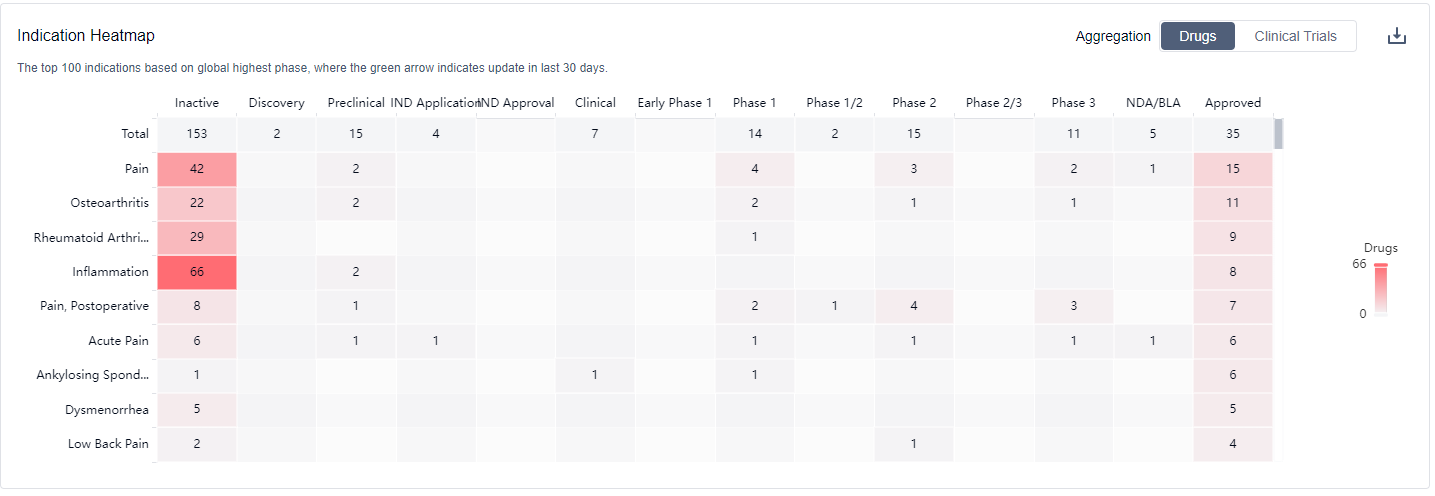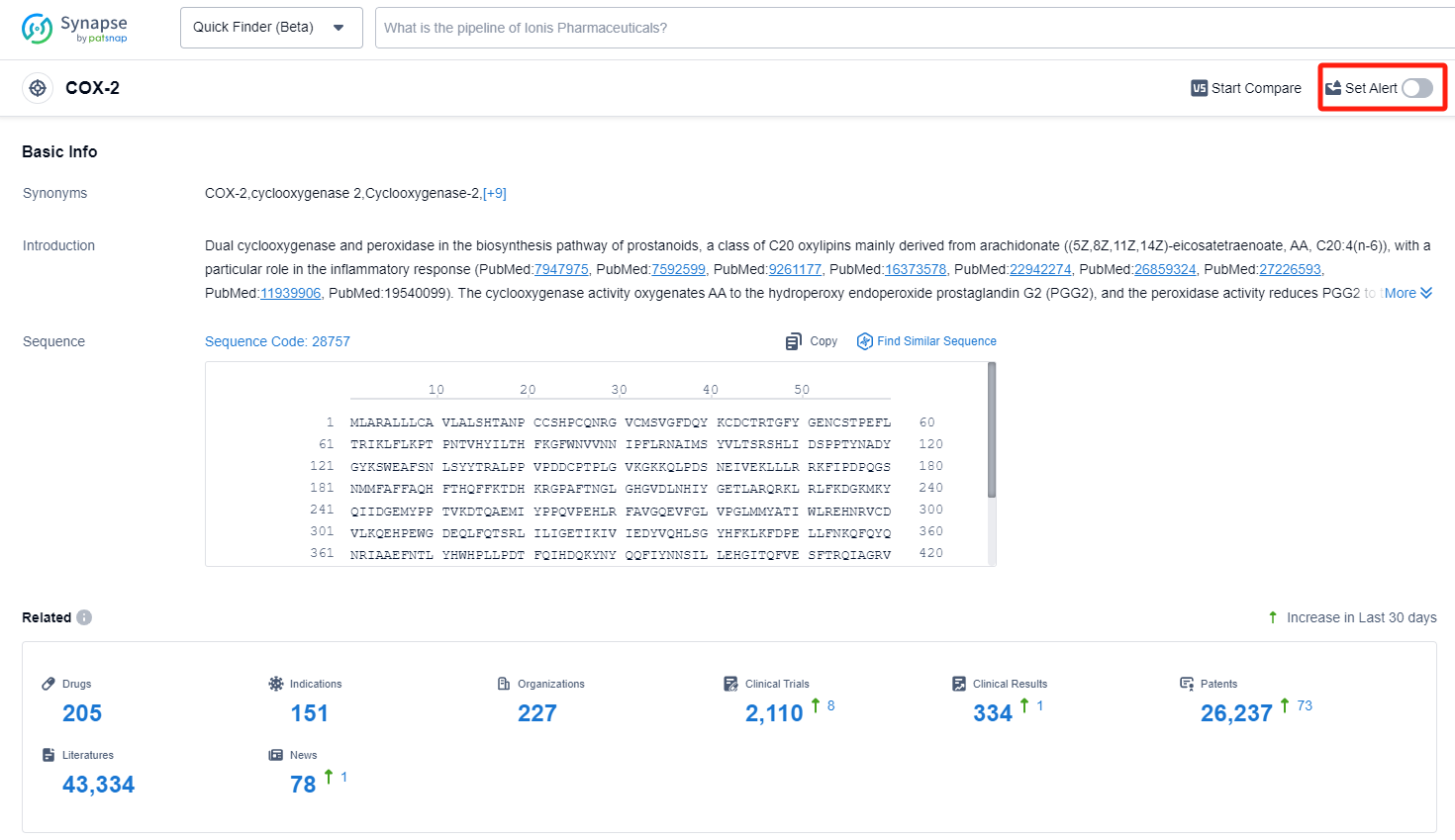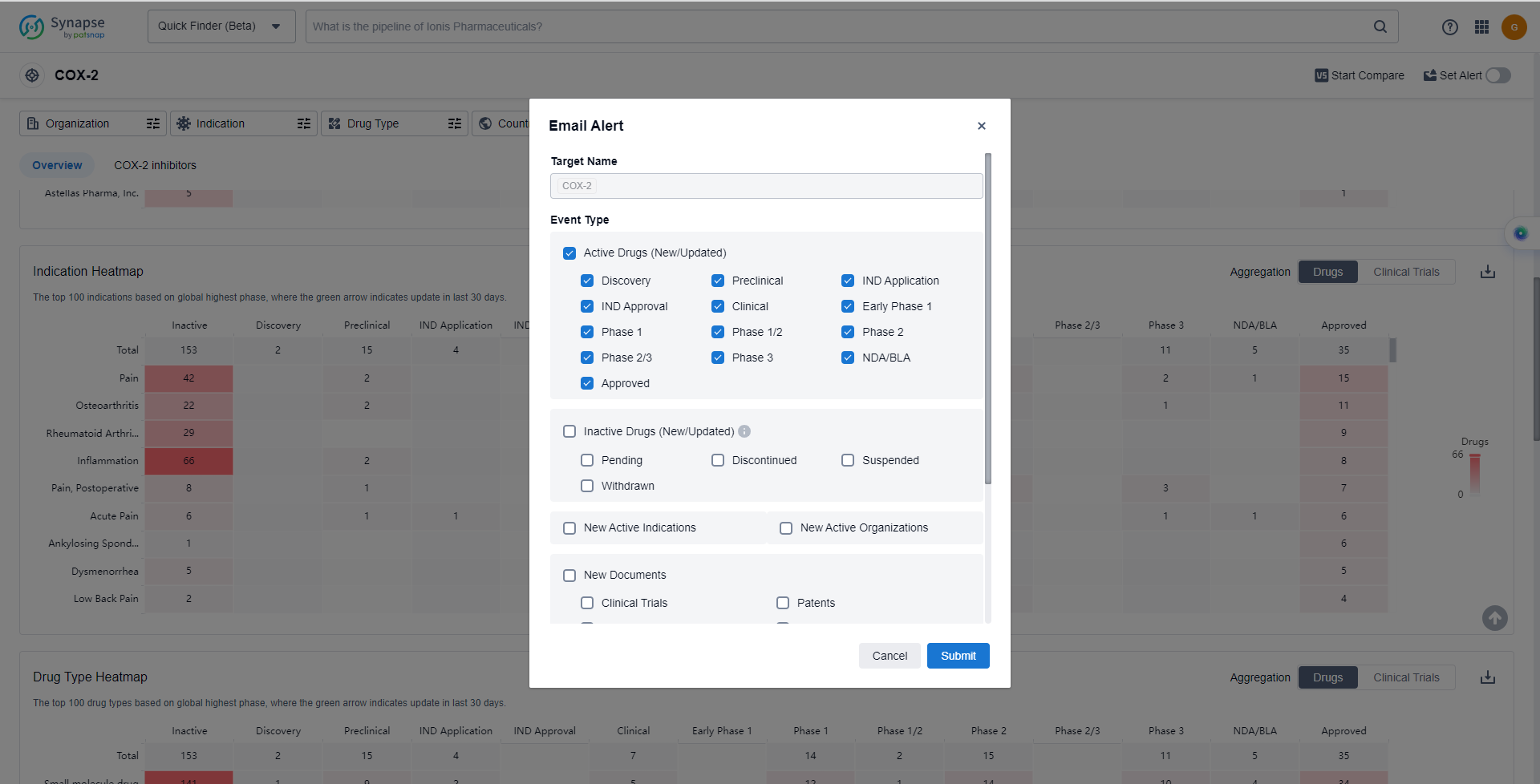What are COX-2 inhibitors and how do you quickly get the latest development progress?
COX-2, or cyclooxygenase-2, is an enzyme that plays a crucial role in the human body's inflammatory response. It is responsible for the production of prostaglandins, which are hormone-like substances involved in various physiological processes. Unlike COX-1, which is constitutively expressed in most tissues, COX-2 is primarily induced during inflammation. COX-2 is involved in the synthesis of prostaglandins that mediate pain, fever, and inflammation. However, excessive COX-2 activity can lead to chronic inflammation and contribute to the development of various diseases, including arthritis and certain types of cancer. Therefore, pharmaceutical interventions targeting COX-2 have been developed to regulate inflammation and manage associated conditions
COX-2 inhibitors belong to nonsteroidal anti-inflammatory drugs (NSAIDs), specifically targeting cyclooxygenase-2 (COX-2). As part of the immune response to infection or injury, COX-2 inhibitors help to release prostaglandins (synthesized from arachidonic acid). Prostaglandins play a key role in the inflammatory response. Chronic inflammation may be the source of pain for patients with scleroderma and may lead to permanent damage. By blocking the production of prostaglandins, COX-2 inhibitors can reduce inflammation levels and minimize complications. For patients with scleroderma, these inhibitors can alleviate inflammation-induced swelling, stiffness, and joint pain caused by inflammation.
The analysis of the target COX-2 in the pharmaceutical industry reveals a competitive landscape with multiple companies involved in the development of drugs. Viatris Inc. stands out with the highest stage of development and multiple approved drugs. Pain is the most common indication for approved drugs, indicating a significant focus on addressing pain-related conditions. Small molecule drugs dominate the drug types progressing rapidly, while China and the United States are leading in terms of drug development. The future development of the target COX-2 is promising, with ongoing research and development efforts by various companies and countries/locations.
What is the mechanism of action of COX-2 inhibitors?
COX-2 inhibitors refer to a class of drugs that specifically target and inhibit the enzyme cyclooxygenase-2 (COX-2). COX-2 is an enzyme involved in the production of prostaglandins, which are chemical messengers that play a role in inflammation, pain, and fever. By inhibiting COX-2, these medications reduce the production of prostaglandins, thereby alleviating pain and inflammation.
From a biomedical perspective, COX-2 inhibitors are commonly used in the treatment of various conditions such as arthritis, menstrual cramps, and acute pain. They are particularly beneficial in cases where inflammation is a major component of the disease process. These drugs are often preferred over non-selective nonsteroidal anti-inflammatory drugs (NSAIDs) because they specifically target COX-2 without significantly inhibiting COX-1, another form of the enzyme that helps protect the stomach lining and maintain kidney function.
It is important to note that while COX-2 inhibitors provide effective pain relief and anti-inflammatory effects, they are not without risks. Prolonged use of these drugs has been associated with an increased risk of cardiovascular events such as heart attack and stroke. Therefore, their use should be carefully considered, and patients with a history of heart disease or stroke may require alternative treatment options. Regular monitoring and close supervision by a healthcare professional are essential when using COX-2 inhibitors.
List of COX-2 Inhibitors
The currently marketed COX-2 inhibitors include:
- Celecoxib/Tramadol Hydrochloride
- Bupivacaine/Meloxicam
- Birch bark extract
- Dexketoprofen Trometamol/Tramadol Hydrochloride
- Polmacoxib
- Imrecoxib
- Lumiracoxib
- Parecoxib Sodium
- Etoricoxib
- Celecoxib
For more information, please click on the image below.
What is the purpose of using COX-2 inhibitors?
COX-2 Inhibitors are anti-inflammatory agents that can be used to treat symptoms associated with scleroderma, such as joint and tendon pain. For more information, please click on the image below to log in and search.
How to acquire the most recent advancement in COX-2 inhibitors?
In the Synapse database, you can keep abreast of the latest research and development advances of COX-2 inhibitors anywhere and anytime, daily or weekly, through the "Set Alert" function. Click on the image below to embark on a brand new journey of drug discovery!








